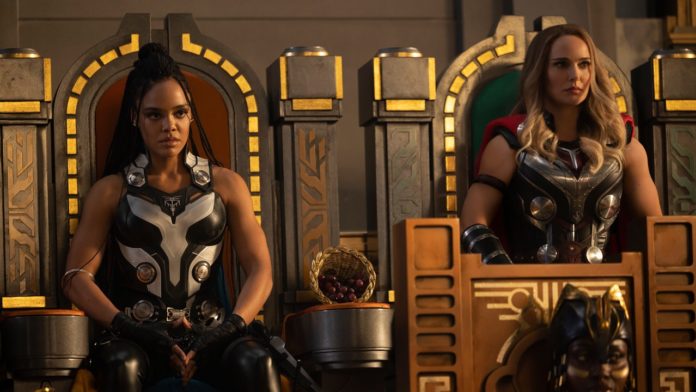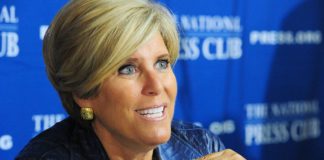
“Getting queerbaited by the [Marvel Cinematic Universe] is like losing at chess to a dog,” wrote one Tweeter at the beginning of the year. Such a scathing sentiment might feel harsh, but it rings awfully true: for better or worse, Marvel Studios is the most dominant cultural force in the present moment, yet across thirty-three movies and TV spin-offs, queer audiences have been offered just sparing slivers of tokenistic visibility. It took eleven years for the first: Avengers: Endgame was widely jeered for its thirty-second gay cameo, where a no-name extra (played, no less, by one of the directors, Joe Russo) laments the loss of his husband to the Rapture-esque ‘snap’.
Twitter content
This content can also be viewed on the site it originates from.
Thor: Love and Thunder, the fourth instalment in the Thor series, is the Queen’s Gambit of gay dog chess. It’s happened again, guys: we’ve been fooled, hoodwinked, led astray! For all of the ostentatious flamboyance in director Taika Waititi’s craft, the abundant hot air from an assuredly well-meaning cast and the return of Natalie “veritable gay icon” Portman, the queer ball has been once again fumbled. At a London screening — now seen in a viral TikTok clip — Portman and Waititi went so far as to dub it “so gay” and “super gay,” respectively; quelle surprise, they lied.
There’s an abundance of euphemism and innuendo, sure: Waititi’s character Korg, an alien made of rock, talks about having two dads and has hand sex with another moustachioed member of his species. Tessa Thompson’s canonically bisexual demi-god Valkyrie kisses another woman’s hand, ostensibly to convey interest, and also butches up in a suit. An Asgardian kid insists on going by a gender-neutral name — this is nice, to be fair, subtly reinforcing the agency of children amid the increasing real-world hostilities for trans people. A few fleeting shots communicate homoerotic tension between Thor (Chris Hemsworth) and Starlord (Chris Pratt), but it’s simply the butt of a very early-noughties gag. Otherwise, there’s the latent homoeroticism embedded into almost every superhero flick: the slicked-up, sculpted male bodies, the ridiculous costumes, male-on-male tension veering on angst, the arch macho of it all.
To state the obvious, little of this amounts to meaningful queer representation. And that has been the problem which has hamstrung the MCU’s relationship to sexuality across its 14-year era of global domination: queerness is relentlessly commodified, included to wrangle more butts on seats, hardly as a reflection of real-world diversity nor as a moral stance.
So what’ve we had since that first Endgame moment? There was the openly gay superhero Phastos (Bryan Tyree Henry) in Eternals, notably the in-universe architect of Hiroshima’s nuclear destruction. He kisses his husband in one scene, resulting in widely-felt censorship in countries where to be gay remains against the law. While Disney initially took a public stance, it eventually relented, leaving this and other moments of gay intimacy on the cutting room floor in certain international territories. “How anybody is angry about it, threatened by it … [they’re] ignorant,” said the openly bisexual star Angelina Jolie, as if to demonstrate how, for all the good intent in the world, individual actors are often rendered useless in the shadow of homophobic market forces.








